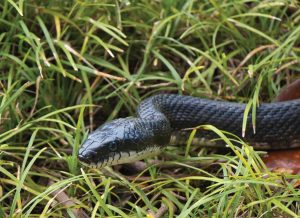A wildlife specialist in Springfield got a call recently from a concerned citizen who had a newborn white-tailed deer fawn. He gets these calls every year, just as does every office of the Illinois Department of Natural Resources (IDNR).
The fawn had been near a highway with its mother when traffic spooked the doe, and instinct took over. The doe bounded into nearby woods, a move that normally would draw a predator’s attention. The fawn dropped to the ground, where it lay stock still.
However, the fawn was in plain sight of the highway. Traffic stopped, and a well-intentioned motorist decided the fawn was abandoned and scooped it up and took it home. Then they called the IDNR.

The fawn was fine where it was. Left alone, the doe would have come back and led its young to a safer place. But now you have a wild animal out of its element, a nice person who has unwittingly broken the law, and decreasing chances of the fawn’s survival with every passing hour.
This situation plays out dozens of times each year, involving wildlife ranging from deer and opossums to robin chicks and tiny cottontail rabbits. People do not see the animals’ mothers nearby and decide the young are orphans. Thinking they are doing a good deed, they bring the animal home. But these well-intentioned adoptions are not in the animals’ best interest.
Most young birds found on the ground have simply grown too big for their nests and are still being fed by their parents. Young birds or mammals brought inside cannot survive on bread soaked in milk. Human food is no substitute for the natural foods they receive in the wild, which are often partially digested or otherwise prepared by parents.
Similar solutions are advisable for deer fawns, and other young wild animals found without obvious parental supervision. Many wild parents do not act like humans, hovering around their young. A human mother would not leave a baby alone in clumps of grass, but this is normal behavior for white-tailed deer. Does visit their fawns only long enough to nurse them. By staying away the rest of the time, they avoid drawing predators’ attention.
First, it is illegal to possess wild animals without a permit. More importantly, there are no approved vaccines to protect wild animals against rabies and other diseases, many of which can strike humans as well. Wild adoptions put people as well as animals at risk.
Parasites present another risk. One example is Baylisascaris procyonis, a common parasite of raccoons. Eight of 10 raccoons have this parasitic round worm, but they have a natural resistance. Humans do not. Baylisascaris can cause serious illness in people, particularly children.
Even under the best of circumstances, most animals born in the wild don’t survive to adulthood. Most fall victim to disease, predators, inclement weather, or just bad luck. That is why they produce many more young each year than are needed to perpetuate their species. Death is a necessary part of life in the wild.
This knowledge, along with an understanding of the dangers and problems involved, provide ample reason not to adopt wildlife.









